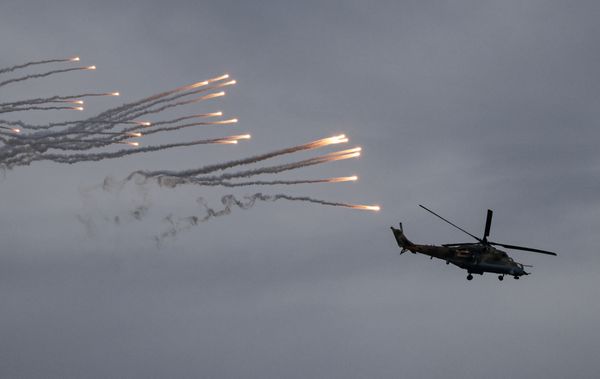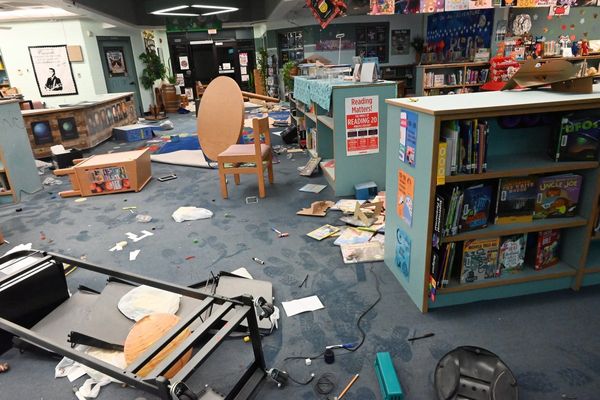LAS VEGAS — The promise of self-driving cars spurred a Cambrian-like explosion of makers of vision sensors for autonomous vehicles. But a survival-of-the-fittest fight is now underway in a subsector of sensor makers known as lidar stocks.
The free-for-all was evident at the recent CES 2023 trade show in Las Vegas, where more than two dozen computer-vision vendors vied for attention, including a number of lidar players. Lidar is short for "laser imaging, detection and ranging."
At least nine publicly traded companies selling vision systems for autonomous vehicles and other applications exhibited at this year's CES, a four-day trade show that ended Sunday. They included Aeva Technologies, AEye, Arbe Robotics, Cepton, Innoviz Technologies, Luminar, MicroVision, Mobileye and Ouster.
Most of the companies appearing at the trade show sell lidar sensors, while Arbe offers a radar solution and Mobileye targets camera-based vision.
The majority of lidar stocks were taken public by special-purpose acquisition companies, or SPACs, from late 2020 to early 2022. But lidar stocks have been poor performers as they are in an emerging market with sales growth still to come. As a result, a shakeout in the market is starting to take place.
Shakeout Among Lidar Stocks
In December, Quanergy Systems, a maker of lidar sensors and related technology, filed for bankruptcy protection about 10 months after going public. Also in December, MicroVision signed a deal to acquire Ibeo Automotive Systems.
And in November, lidar stocks Ouster and Velodyne announced a deal to merge in an all-stock transaction.
"The two companies together will have an amazing cash balance sheet and will have very strong revenues," Mark Frichtl, co-founder and chief technology officer of Ouster, told Investor's Business Daily at CES. "It's all about building a strong, stable company that can serve the customers better."
Many Unproven Companies In Autonomous Vehicles
The lidar sector has too many companies vying for business, he said. And some of those companies are unproved.
"You see companies today that say, 'We have no revenue now but in 2026 it's going to be a hockey stick.' You wouldn't bet the company on that," Frichtl said. "We have growing revenues today, so does Velodyne."
Needham analyst Rajvindra Gill said he has a more positive view on the Ouster-Velodyne merger after meeting with Ouster management at CES.
"We come away more favorable on the upcoming merger, as both companies are focused on delivering lidar units to industrial markets," he said in a note to clients. "The strategy is in the name of broadening adoption and reaching profitability faster."
Innoviz Top Performer In Lidar Stocks
Industrial customers have been early adopters of lidar technology for their equipment, such as cranes and forklifts. Lidar sensors are seen moving to trucks and passenger vehicles for advanced driver-assistance systems, followed by autonomous vehicles. Lidar sensors are superior to radar and camera systems for their range, accuracy and precision, proponents say.
But for now, lidar stocks are laggards on the market. Most have IBD Relative Strength Ratings of 10 or below, on a scale where 1 is worst and 99 is best.
Among lidar stocks, the best performer has been Innoviz. It has an IBD Relative Strength Rating of 37. Innoviz stock is outperforming its peers because of automotive contracts with BMW and Volkswagen.
"We won the last two (automotive) deals on the market," Innoviz Chief Executive Omer Keilaf told IBD at CES. The company plans to announce a third deal soon with an Asian automaker, he said.
Meanwhile, he added Innoviz is competing on 11 contracts with winners seen announced by the end of the year.
"Every win brings us closer to the next one," Keilaf said.
Autonomous Vehicles: Sensor Fusion Is Coming
Ultimately the lidar market probably will consolidate to two or three suppliers, Keilaf said. That happened in other automotive segments like air bags and brake systems, he said.
As prices for sensor technologies fall, automakers likely will use different types of sensors for more robust vision systems. That will result in "sensor fusion" that will combine lidar with radar and camera-based systems, Ouster's Frichtl said.
Follow Patrick Seitz on Twitter at @IBD_PSeitz for more stories on consumer technology, software and semiconductor stocks.







